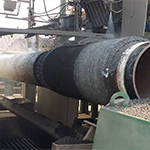- Industrial zone, South of Anping Town, Hengshui, Hebei, China.
- sales@hfpetromesh.com
- +86-18931809706
 Afrikaans
Afrikaans  Albanian
Albanian  Amharic
Amharic  Arabic
Arabic  Armenian
Armenian  Azerbaijani
Azerbaijani  Basque
Basque  Belarusian
Belarusian  Bengali
Bengali  Bosnian
Bosnian  Bulgarian
Bulgarian  Catalan
Catalan  Cebuano
Cebuano  Corsican
Corsican  Croatian
Croatian  Czech
Czech  Danish
Danish  Dutch
Dutch  English
English  Esperanto
Esperanto  Estonian
Estonian  Finnish
Finnish  French
French  Frisian
Frisian  Galician
Galician  Georgian
Georgian  German
German  Greek
Greek  Gujarati
Gujarati  Haitian Creole
Haitian Creole  hausa
hausa  hawaiian
hawaiian  Hebrew
Hebrew  Hindi
Hindi  Miao
Miao  Hungarian
Hungarian  Icelandic
Icelandic  igbo
igbo  Indonesian
Indonesian  irish
irish  Italian
Italian  Japanese
Japanese  Javanese
Javanese  Kannada
Kannada  kazakh
kazakh  Khmer
Khmer  Rwandese
Rwandese  Korean
Korean  Kurdish
Kurdish  Kyrgyz
Kyrgyz  Lao
Lao  Latin
Latin  Latvian
Latvian  Lithuanian
Lithuanian  Luxembourgish
Luxembourgish  Macedonian
Macedonian  Malgashi
Malgashi  Malay
Malay  Malayalam
Malayalam  Maltese
Maltese  Maori
Maori  Marathi
Marathi  Mongolian
Mongolian  Myanmar
Myanmar  Nepali
Nepali  Norwegian
Norwegian  Norwegian
Norwegian  Occitan
Occitan  Pashto
Pashto  Persian
Persian  Polish
Polish  Portuguese
Portuguese  Punjabi
Punjabi  Romanian
Romanian  Russian
Russian  Samoan
Samoan  Scottish Gaelic
Scottish Gaelic  Serbian
Serbian  Sesotho
Sesotho  Shona
Shona  Sindhi
Sindhi  Sinhala
Sinhala  Slovak
Slovak  Slovenian
Slovenian  Somali
Somali  Spanish
Spanish  Sundanese
Sundanese  Swahili
Swahili  Swedish
Swedish  Tagalog
Tagalog  Tajik
Tajik  Tamil
Tamil  Tatar
Tatar  Telugu
Telugu  Thai
Thai  Turkish
Turkish  Turkmen
Turkmen  Ukrainian
Ukrainian  Urdu
Urdu  Uighur
Uighur  Uzbek
Uzbek  Vietnamese
Vietnamese  Welsh
Welsh  Bantu
Bantu  Yiddish
Yiddish  Yoruba
Yoruba  Zulu
Zulu
- Afrikaans
- Albanian
- Amharic
- Arabic
- Armenian
- Azerbaijani
- Basque
- Belarusian
- Bengali
- Bosnian
- Bulgarian
- Catalan
- Cebuano
- Corsican
- Croatian
- Czech
- Danish
- Dutch
- English
- Esperanto
- Estonian
- Finnish
- French
- Frisian
- Galician
- Georgian
- German
- Greek
- Gujarati
- Haitian Creole
- hausa
- hawaiian
- Hebrew
- Hindi
- Miao
- Hungarian
- Icelandic
- igbo
- Indonesian
- irish
- Italian
- Japanese
- Javanese
- Kannada
- kazakh
- Khmer
- Rwandese
- Korean
- Kurdish
- Kyrgyz
- Lao
- Latin
- Latvian
- Lithuanian
- Luxembourgish
- Macedonian
- Malgashi
- Malay
- Malayalam
- Maltese
- Maori
- Marathi
- Mongolian
- Myanmar
- Nepali
- Norwegian
- Norwegian
- Occitan
- Pashto
- Persian
- Polish
- Portuguese
- Punjabi
- Romanian
- Russian
- Samoan
- Scottish Gaelic
- Serbian
- Sesotho
- Shona
- Sindhi
- Sinhala
- Slovak
- Slovenian
- Somali
- Spanish
- Sundanese
- Swahili
- Swedish
- Tagalog
- Tajik
- Tamil
- Tatar
- Telugu
- Thai
- Turkish
- Turkmen
- Ukrainian
- Urdu
- Uighur
- Uzbek
- Vietnamese
- Welsh
- Bantu
- Yiddish
- Yoruba
- Zulu
weight of steel grating per square foot
Understanding the Weight of Steel Grating per Square Foot
Steel grating is a popular material used in various applications due to its strength, durability, and versatility. It is commonly found in industrial settings and construction projects, serving as walkways, platforms, and drainage covers. One critical factor to consider when using steel grating is its weight per square foot, which influences installation, load-bearing capacity, and overall design.
Steel grating comes in different configurations and designs, such as welded, press-locked, and riveted types. Each type has its specific applications and weight characteristics. The weight of steel grating primarily depends on its material thickness, the spacing between the bars, and the overall surface area. Generally, heavier grating can bear larger loads, making it suitable for industrial environments where heavy machinery operates.
To provide a general idea, standard steel grating weighs anywhere from 1.5 to 3.5 pounds per square foot for light-duty applications, such as pedestrian walkways. Heavier-duty grating, designed for industrial uses, can weigh significantly more, sometimes exceeding 5 pounds per square foot. Therefore, it is crucial for engineers and project managers to factor in the weight when designing structures that will incorporate steel grating.
When planning a project, understanding the weight of steel grating is essential for several reasons. First, it influences the choice of supporting structures. For instance, if the grating is too heavy, it might necessitate reinforcement of the existing support beams or the installation of additional support to ensure safety and reliability. This can significantly affect project costs and timelines.
weight of steel grating per square foot

Second, installation logistics also depend on the weight of the grating. Heavier panels require more personnel and equipment for safe handling and positioning. In contrast, lighter grating can be more manageable, allowing for quicker installations and fewer labor costs.
In addition to practical considerations, the weight of steel grating can impact budgeting for projects. Pricing varies by material weight, and heavier grating often results in increased costs. Therefore, it is beneficial to strike a balance between choosing a product that is suitably robust for the intended application without incurring unnecessary expenses due to weight.
Lastly, understanding the weight per square foot of steel grating is vital for compliance with safety regulations. Many industries have specific standards dictating the minimum load-bearing requirements for walkways and platforms. Familiarity with the weight of the selected grating allows project teams to ensure that their choices meet or exceed these regulations, thus minimizing the risk of accidents and liabilities.
In conclusion, the weight of steel grating per square foot is a crucial factor in its application across various industries. Whether for construction, maintenance, or design customization, knowing the weight helps ensure structural integrity, safety compliance, and cost-effectiveness. As technology advances and materials improve, staying informed about these specifications will be key for professionals in construction and engineering fields, securing the best outcomes for their projects.
-
Why Our Shaker Screen for Sale Stands Out in Every ApplicationNewsAug.08,2025
-
Unmatched Efficiency with Premium Shale Shaker Screen TechnologyNewsAug.08,2025
-
Reliable, Durable, and Cost-Effective: Press Locked Steel Grating SolutionsNewsAug.08,2025
-
Precision Strength with Welded Steel Bar GratingNewsAug.08,2025
-
Perimeter Safety Netting: The High-Strength Shield for Elevated Safety SolutionsNewsAug.08,2025
-
Maximize Performance with Steel Walkway GratingNewsAug.08,2025